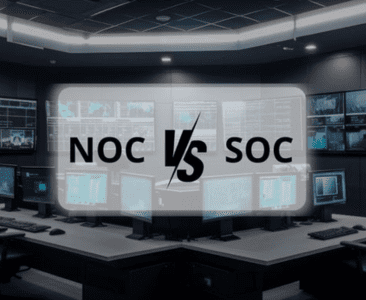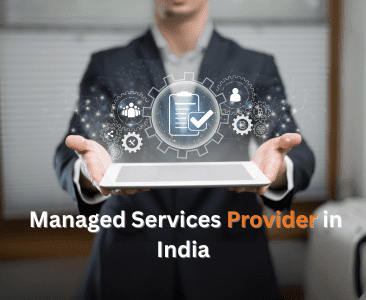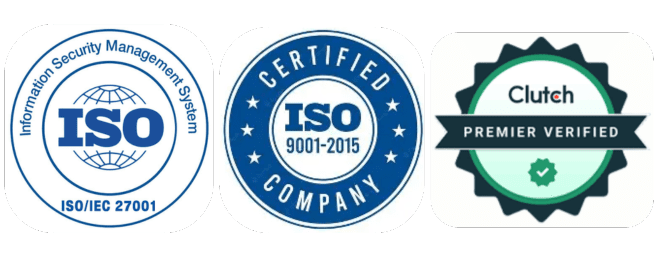In today’s tech-driven world, businesses face growing challenges in managing their IT infrastructure. From cloud computing to cybersecurity, keeping systems running smoothly can feel overwhelming. That’s where managed services come in a solution that simplifies IT management for businesses of all sizes. This beginner’s guide explains what managed services are, their benefits, and how they can transform your operations, whether you’re a startup or an established company. Let’s explore managed services in plain terms!
Understanding Managed Services: The Basics
Managed services involve outsourcing routine IT tasks to a third-party provider, known as a Managed Service Provider (MSP). Picture it as hiring an expert IT team without the costs of in-house staff. MSPs handle tasks like network monitoring, software updates, data backups, and troubleshooting, keeping your systems efficient.
Unlike traditional IT support, which fixes problems after they occur, managed services focus on prevention. MSPs monitor systems 24/7, addressing issues before they cause downtime. For beginners, think of managed services as a gardener tending to your IT landscape pruning problems early to keep everything thriving. The global market for these services is expected to reach $400 billion by 2028, driven by remote work and cyber threats.

The Evolution of Managed Services
The concept of managed services began in the 1990s when businesses needed help managing complex networks during the internet boom. The 2000s cloud revolution, sparked by platforms like AWS, made advanced tech accessible to smaller firms. MSPs stepped in to manage cloud transitions and security.
By the 2010s, smartphones, IoT, and big data increased IT demands. The 2020 pandemic, with remote work surging 400% in some sectors (Gartner), solidified the role of managed it services. Today, they incorporate AI analytics and advanced security, making them essential for businesses navigating modern tech.
Types of Managed Services: What’s Available?
Managed services are tailored to specific needs. Here’s a beginner-friendly overview:
1. Network Management
MSPs oversee routers, firewalls, and bandwidth to ensure reliable connectivity, preventing costly outages.
2. Cloud Services Management
With 94% of businesses using cloud platforms (Flexera, 2023), MSPs manage AWS, Azure, or Google Cloud, handling scaling and compliance.
3. Endpoint Management
This covers devices like laptops and phones, securing and updating them to support flexible work setups.
4. Security and Compliance
With cyberattacks every 39 seconds, MSPs provide threat detection, vulnerability scans, and compliance with regulations like GDPR.
5. Help Desk and Support
From AI-driven chatbots to expert support, MSPs resolve issues quickly, often within hours.
6. Data Backup and Disaster Recovery
Automated backups and tested recovery plans minimize risks from incidents like ransomware.
Start with a focused service, like security, and expand as your business grows. Hybrid options combine on-site and remote solutions.
Benefits of Managed Services: Why They Matter
The advantages of managed it services are compelling:
-
Cost Savings: Predictable fees reduce IT expenses by 20-30% for SMBs (CompTIA).
-
Expertise: MSPs offer certified professionals, delivering high-level skills affordably.
-
Scalability: Services adapt as your business grows, adding users or tools seamlessly.
-
Proactive Care: 24/7 monitoring cuts downtime by up to 80% (IDC).
-
Business Focus: Outsourcing IT frees you to innovate.
-
Security: Advanced defenses lower breach risks.
For example, a retail chain using managed services eliminated weekly server crashes, boosting online sales.
How Managed Services Operate: A Simple Breakdown
Here’s how managed it services work:
-
Assessment: MSPs evaluate your IT setup hardware, software, and risks.
-
Onboarding: A customized plan is created, with tools installed for monitoring.
-
Daily Management: Software tracks performance, automating fixes or escalating issues.
-
Reporting: Dashboards show metrics like uptime and threats blocked.
-
Support and Growth: Services scale with your needs, with fast help desk responses.
MSPs use tools like ConnectWise for efficiency. Transparency is key ask for clear reports.
Choosing an MSP: Your Guide to Smart Selection
Selecting the right provider for managed it services is crucial. Consider:
-
Reputation: Check reviews on Clutch or G2.
-
Customization: Ensure services fit your tech stack.
-
Security: Look for SOC 2 compliance.
-
Pricing: Clarify fixed or per-user costs.
-
Flexibility: Prefer short-term contracts for trials.
-
Global vs. Local: Global for 24/7 support, local for hands-on needs.
Try a small project, like email migration, to test the provider.

Clearing Up Myths About Managed Services
Doubts about managed services? Let’s debunk common myths:
-
Myth: Only for Large Firms – SMBs make up 70% of MSP clients (Canalys).
-
Myth: Loss of Control – You define policies; MSPs implement.
-
Myth: Too Expensive – ROI often arrives within months.
-
Myth: Cloud-Only – Hybrid solutions are common.
-
Myth: One-Size-Fits-All – Services are tailored.
Understanding managed services dispels hesitation they empower, not complicate.
Real-World Wins: Managed Services Success Stories
Here’s how managed it services deliver:
-
Startup Success: A fintech firm scaled nationwide in six months with zero outages, thanks to cloud and security services.
-
Ransomware Recovery: A retailer’s MSP neutralized a phishing attack, saving millions.
-
Non-Profit Efficiency: A charity cut energy costs 40% by optimizing servers.
These cases highlight the impact of managed it services.
The Future of Managed Services: Trends to Watch
Managed services are evolving with technology:
-
AI and Automation: Predictive tools anticipate issues.
-
Edge Computing: Managing IoT data at the source.
-
Zero-Trust Security: Enhanced protection for modern threats.
-
Sustainability: Green IT reduces carbon footprints.
-
Integrated Solutions: Combining IT with CRM or HR tools.
By 2030, managed services may redefine digital strategy.
Take the Leap: Start with Managed Services
Managed it services simplify IT, letting you focus on growth and innovation. From securing data to streamlining operations, they’re a strategic asset. Ready to transform your tech? Contact vGics Global for a free consultation on tailored managed it services. Visit vgicsglobal.com or email info@vgicsglobal.com your IT future begins now!
Ultimate Guide to Managed Services | vGics Global























